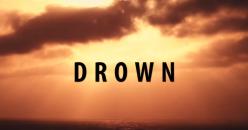AustLit
Latest Issues
AbstractHistoryArchive Description
'Len is a Surf Lifesaving champion, a legend in the cloistered surf club just like his father. But when the younger, faster, fitter Phil arrives at the club, Len’s legendary status starts to crumble. Then Len sees Phil arriving in the company of another man; a man Phil gives a farewell kiss too. Phil is gay. Over the summer season, Len starts to form unexpected, confusing feelings for Phil. It’s something Len cannot accept and after the annual awards dinner, Len explodes. He finds Phil in the Club House locker room and violently attacks him. But to Len’s surprise, Phil remains loyal to the mateship pack and refuses to rat on Len about the beating in the Club House locker Room. Len stays in the Club and is free to compete in the annual Surf Lifesaving competition; a competition Len has won five times but Phil wins and Len’s defeat is final. Broken, Len refuses to die and with his best mate Meat he takes Phil on a victory bender through the seedy city in an attempt to secure an intoxicated oblivion. Arriving back at the beach where Phil won his victory the day before, Len sets upon Phil. And in a series of humiliating acts, Len finally comes face to face with a fundamental question, can he accept the truth about his sexuality and identity or will he succumb to complete oblivion.'
Source: Screen Australia.
Publication Details of Only Known VersionEarliest 2 Known Versions of
Works about this Work
-
Gender and Sexual Diversity and Suicide on Australian Screens : Culture, Representation, and Health Pedagogies
2021
single work
criticism
— Appears in: Journal of Popular Culture , April vol. 54 no. 2 2021; (p. 365-387)'Despite an often‐repeated cliché that gender and sexually diverse characters are relatively absent from film and television, Australian screen production has a very rich history of representing sexual and gender diversity: greater than nineteen wide‐release films since 1993, including internationally recognized films such as Priscilla, Queen of the Desert (1994), The Sum of Us (1994), Head On (1998), and The Monkey’s Mask (2000), portray gender and sexual diversity. Nine Australian films with LGBTQ, gender, and sexually diverse themes were released between 2013 and 2018, indicating an entrenchment of LGBTQ representation on Australian screens. Characters in major Australian television dramas and soap operas, such as Home and Away and Neighbours, have increased in regularity and complexity over the past two decades. Sexual stories, including narratives of minority sexual lives, have never, of course, been repressed or invisible, but according to Ken Plummer, they have long been central to contemporary Western culture (4). Stories representing gender and sexually diverse subjects depicting identity struggles and articulating minority health outcomes are a major and ongoing part of Australian creative production. What is significant in cultural analysis is not questions of visibility or invisibility but how the continuities and disruptions of depictions of gender and sexual minorities play a significant, pedagogical role in social participation, social harmony, acceptance, individual health and wellbeing, and community belonging (Cover, Queer Youth Suicide; Emergent Identities).' (Introduction)
-
Gender and Sexual Diversity and Suicide on Australian Screens : Culture, Representation, and Health Pedagogies
2021
single work
criticism
— Appears in: Journal of Popular Culture , April vol. 54 no. 2 2021; (p. 365-387)'Despite an often‐repeated cliché that gender and sexually diverse characters are relatively absent from film and television, Australian screen production has a very rich history of representing sexual and gender diversity: greater than nineteen wide‐release films since 1993, including internationally recognized films such as Priscilla, Queen of the Desert (1994), The Sum of Us (1994), Head On (1998), and The Monkey’s Mask (2000), portray gender and sexual diversity. Nine Australian films with LGBTQ, gender, and sexually diverse themes were released between 2013 and 2018, indicating an entrenchment of LGBTQ representation on Australian screens. Characters in major Australian television dramas and soap operas, such as Home and Away and Neighbours, have increased in regularity and complexity over the past two decades. Sexual stories, including narratives of minority sexual lives, have never, of course, been repressed or invisible, but according to Ken Plummer, they have long been central to contemporary Western culture (4). Stories representing gender and sexually diverse subjects depicting identity struggles and articulating minority health outcomes are a major and ongoing part of Australian creative production. What is significant in cultural analysis is not questions of visibility or invisibility but how the continuities and disruptions of depictions of gender and sexual minorities play a significant, pedagogical role in social participation, social harmony, acceptance, individual health and wellbeing, and community belonging (Cover, Queer Youth Suicide; Emergent Identities).' (Introduction)




